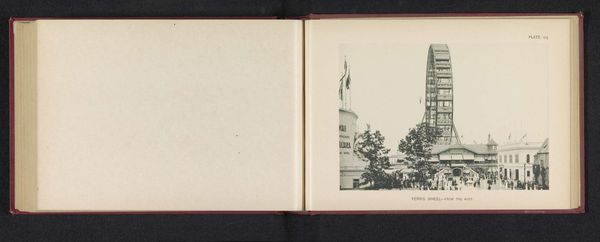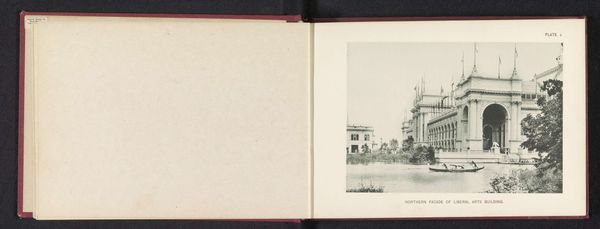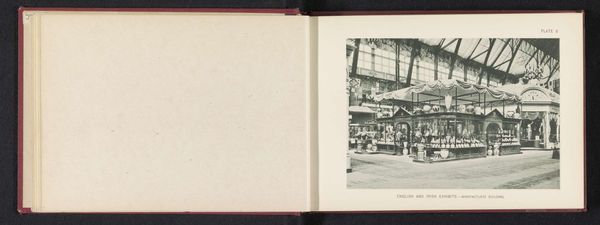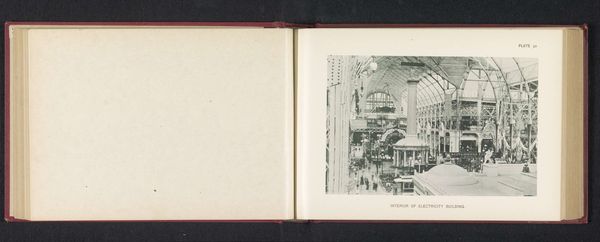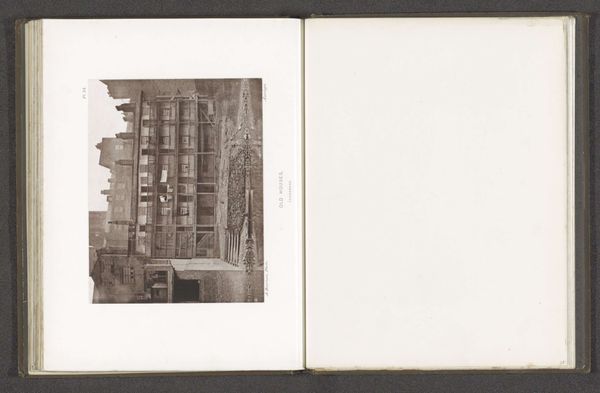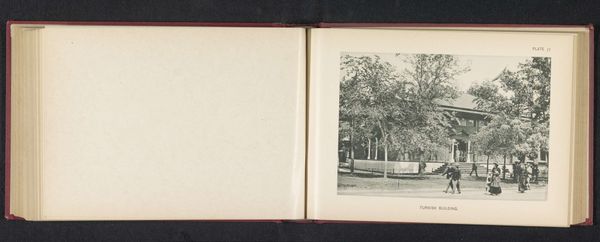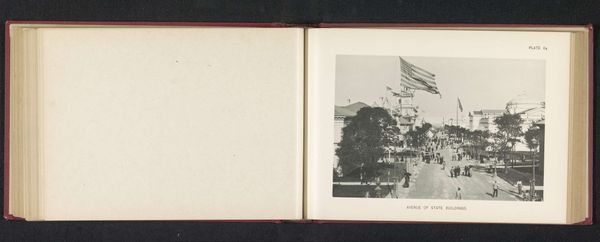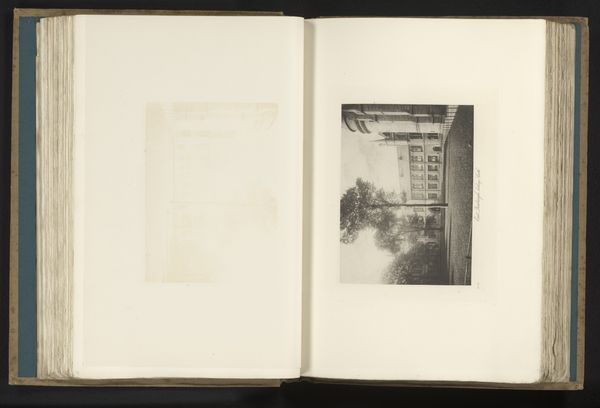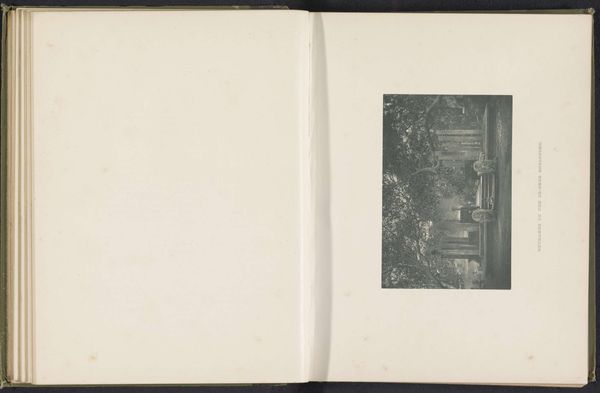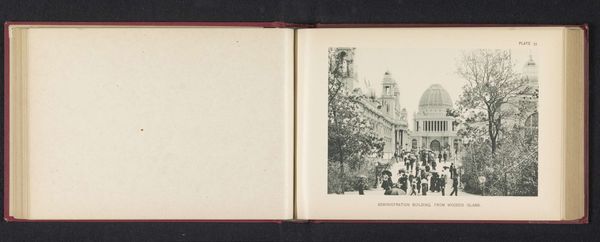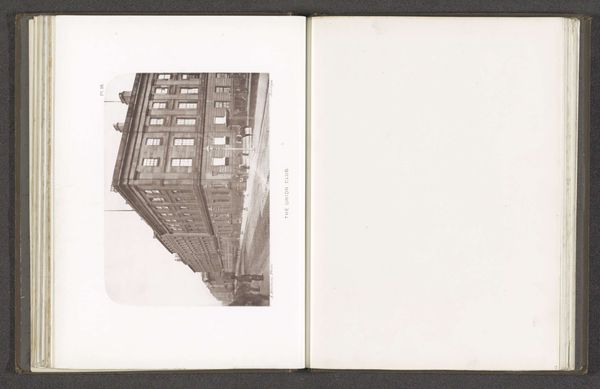
Toegangshekken naar de Duitse tentoonstelling tijdens de World's Columbian Exposition in Chicago in 1893 1893
0:00
0:00
Dimensions: height 134 mm, width 190 mm
Copyright: Rijks Museum: Open Domain
Curator: This photoprint by Charles Dudley Arnold, taken in 1893, captures the entrance gates to the German exhibition at the World's Columbian Exposition in Chicago. Editor: My first impression is of grandiose industrial might; those gates are immense, intricately wrought, and seem to guard some sacred domain of manufacture. Curator: Indeed. Think about the materiality of these gates. The iron, where did it come from, who forged it? The image hints at Germany's booming industrial complex at the close of the nineteenth century, exhibiting their technological advancements and projecting their global ambitions onto the world stage. Editor: And it's interesting to situate this exposition within the historical context of rapidly escalating nationalism and imperialism. While ostensibly a celebration of progress and unity, the fair also served as a platform for countries to showcase their power and compete for dominance. This German exhibition was a statement, carving out its space, while America looked on. What were they building, how were they showcasing and branding their culture and goods for a global audience? Curator: We can see that, and beyond the political signaling, we can examine the production processes—the labor conditions, resource extraction, the assembly lines of Germany that made all this metalwork possible. Were unions involved? Were these laborers paid fairly? The opulence on display masks the underlying structures of labor that made such spectacles possible. Editor: Absolutely. And it's also worthwhile to consider how the photographic medium itself contributes to the narrative. The black and white image gives it a certain documentary feel, suggesting an objective record. How did it influence the reception and perception of the event? It really asks to question if it showed things exactly as they were or it embellished reality. Curator: By highlighting both the finished product and the potential processes and context behind its creation, maybe we are looking at the larger mechanisms of global spectacle and resource use that such displays relied upon, mechanisms still relevant today. Editor: A fascinating interplay of art, labor, and empire captured in one image. It serves as a visual reminder of how material culture intersects with broader political and historical forces.
Comments
No comments
Be the first to comment and join the conversation on the ultimate creative platform.
